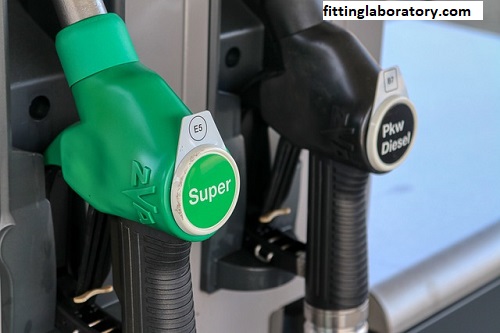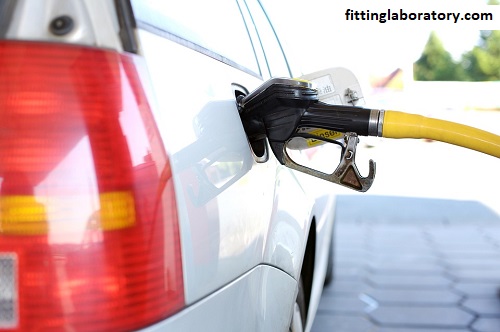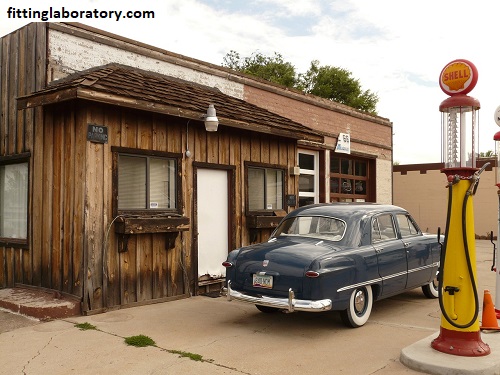Line Fittings: All-Inclusive Understanding
Fuel Line Fittings:
Fuel line fittings can be described as integral to the automotive and machinery system through a secure and efficient transfer of fuel from the tank into the engine. The types, functions, materials, installation methods, and maintenance would all contribute to achieving optimal performance and safety for applications. In this article, details about fuel line fittings, their importance, and practical insights are discussed and complemented by frequently asked questions for clearing common concerns.

What Are Fuel Line Fittings?
Fuel line fittings are unique fittings that connect hose or tubing lines with various machinery. They create a leak-proof connection between the hoses, tubes, and the fuel system, with proper and safe fuel flow. Several designs, dimensions, and materials vary based on application and fuel type.
Key Composition of Fuel Line Fittings:
Fuel Line Fittings:
- Fit: These can be threaded, compression, or push-on types and generally connect hoses or tubes to a variety of components, such as the fuel tank, the fuel pump, or even the engine.
- Seals and O-rings: Many of these fittings include seals or O-rings that create a tight, leak-proof seal. These parts are critical in preventing leaks from occurring around fuel and are indispensable for maintaining system integrity.
- Hoses or Tubes: Fuel fittings come with the hoses or tubes that carry fuel from one part to another.
Types of Fuel Line Fittings:
Fuel lines can be broadly classified into two categories based on design and application as follows:
1. Threaded Fittings:
Threaded fittings comprise male and female threads, which upon being screwed together produce a tight fit. Most applications where they are used require high pressure but when manufactured, they generally consist of brass or steel.
2. Compression Fittings:
Fittings generally consist of a fitting body and a compression ring, or ferrule. Compression is how compression fittings create a seal through the nut being tightened over the tube, squeezing it. Compression fittings are widely used in fuel lines because of their reliability.
3. Push-On Fittings:
Push-on fittings are made to push on effortlessly. They are simply pushed onto the fitting without the need for the use of tools. They are primarily used in low-pressure fuel systems.
4. Barb Fittings:
Barb fittings are a type of fittings that have a ridged end. It has the feature of gripping the hose by pushing it onto it. Barb fittings are commonly used in applications involving low pressures. They are also available in several materials.
5. AN (Army-Navy) Fittings:
Fittings are one of the standardized types of fittings that characterize a fuel line in an aircraft or motorsport. Its particular design ensures it can be assembled and disassembled without difficulty, and it is therefore widely used in high-performance applications.
Applications of Fuel Line Fittings:
Fuel Line Fittings:
Line fittings have various applications. These include:
1. Automotive:
In an automobile, in the automotive system, the fuel line fitting will connect the fuel tank, pump, and engine. It plays a significant role in maintaining fuel pressure without which leaks might occur.
2. Motorbikes and ATVs:
Like cars, motorbikes and all-terrain vehicles require sturdy fuel line connections to fulfill their obligation of feeding the engine with the right amount of fuel to function correctly.
3. Sea Uses:
Fuel line connections for boat engines are designed for the most hostile environments, including saltwater conditions. They are essential for safe operation and cost-effectiveness.
4. Industrial Machinery:
Fuel lines are also found in various industrial machines and equipment, which run on gasoline or diesel while ensuring safe fuel transfer.
5. Small Engines:
Small engines, such as lawnmowers and chainsaws, utilize their fuel fittings to effectively connect the fuel lines.
Benefits of Quality Fuel Line Fittings:
Fuel Line Fittings:

1. Leak Resistance:
Quality fuel line fittings are designed to ensure the fitting seals tightly so that any possible leakage, which would endanger safety or maybe cause environmental pollution, is eliminated.
2. Reliability;
Fuel line fittings are constructed from durable material, such as brass, stainless steel, or plastic, and hence will be able to endure a significant variety of operating conditions, including extreme temperature excursions or chemical exposure.
3. Easy Installation:
Many fuel line fittings are designed with the ease of installation in mind. This provides users the opportunity to install and remove fittings quickly and easily, without the need for special tools.
4. Compatibility:
With a wide variety of fittings, the user could find the proper one for the particular fuel system application and thus achieve the appropriate fuel flow and performance.
5. Corrosion Resistance;
Some materials utilized in the fabrication of fuel line fittings have corrosion resistance, which is important when the product is going to run under aggressive conditions, such as in marine operations.
How to Install Fuel Line Fittings:
Fuel Line Fittings:
When installing fuel line fittings, be observant concerning detail so that the attachment can be secure and leak-proof. The steps for proper installation are shown below:
Gathering of Tools and Equipment:
Before beginning with the installation of fuel line fittings, gather together all tools and equipment required including:
- Fuel Line Fittings
- Fuel Hose or Tube
- Wrenches for threaded fittings
- Hose clamps as required
- Clean Rags
- Fuel Line Cleaner as required
Step 2: Preparing the Fuel Lines:
Before installing the fitting, clean out the fuel lines and ensure them to be debris-free. Clean any contaminants using the fuel line cleaner.
Step 3: Fuel Line Cutter:
If you have a shorter length in mind, cut the fuel line with a tube cutter. The cut must be perpendicular and clean to give a proper seal.
Step 4: Install the Fitting:
- Threaded Fittings: Coate well with Teflon tape or pipe sealant to the threaded end of the fitting before screwing on. Set the wrench to snug, not overtighten, since overtightening will crush the fitting.
- Compression Fittings: Put the nut and compression ring onto the tube and push the tube into the fitting. Then, tighten the nut by hand onto the compression ring until it is the same color as the ring and has a good seal.
- Push-On and Barb Fittings: Just push the hose onto the fitting. Tighten a little better with a hose clamp installed around the connection.
Step 5: Leak Check:
Turn the fuel system on after completing the installation and check for leaks. Spray a soapy water solution around the connections; if bubbles appear, there is a leak to be adjusted.
Repair and Replacement of Fuel Line Fittings:
Fuel Line Fittings:
Maintenance of fuel line fittings usually ensures their longevity and efficiency. Consider the following tips for maintenance:
1. Inspections:
Regular checks must be done on the fuel line fittings for signs of corrosion, wear, or leaks. Early detection may prevent more comprehensive problems.
2. Cleaning Of Connections:
The connections must be kept clean of debris to ensure tight sealing. The fittings should then be cleaned with a clean piece of cloth to ensure no contaminants are left in the fuel line fittings.
3. Change Worn Fittings:
This is advisable when you notice cracks or corrosion to the fitting, or if you believe the wear and tear to be unusually high. The integrity of the system must be ensured at all times.
4. Fuel Lines:
Check for cracks or evidence of degradation of the fuel lines which are usually made from rubber or plastic. Replace them when damaged.
5. Fuel Quality Monitoring;
Using clean and proper fuel is necessary to not contaminate and damage the fittings of fuel lines. The quality of fuel should be frequently checked, especially in small engines or seasonal equipment.
Frequently Asked Questions About Fuel Line Fittings:
Fuel Line Fittings:
Q1: What are some of the most common materials used when making fuel line fittings?
Fuel line fittings can be made from materials like brass, stainless steel, plastic, and aluminum where durability and withstanding corrosion are very valued.
Q2: Selecting the Right Fuel Line Fitting:
Most fittings are fuel system-type specific. They also vary in size. Contemplate the fuel system, fuel line size, and specific application requirements – for example, high pressure, and high temperature. Determine whether the fitting is the proper type: threaded or compression, for example.
Q3: Can I use used fuel line fittings?:
In many instances, fuel line fittings can be reused if they do not have signs of damage or over-wearing. But always examine them for symptoms of deterioration before their use.
Q4: What would I do if I were able to find a fuel leak?
If you are able to pinpoint a fuel leak, turn off the fuel supply first. Determine the source of the leak, torque the fitting if necessary, and replace any damaged parts.
Q5: Are fuel line fittings standardized?
Fuel line fittings, for example, are generally manufactured to industry standards that are often established by organizations such as the Society of Automotive Engineers (SAE), among others.
Q6: What is the difference between barb fittings and push-on fittings?
The Barb fitting features a ridge at both ends that grip the hose when pressed on compared to push-on which can be installed quickly but does not offer any gripping mechanism. They are thus suitable for low-pressure applications.
Q7: Are fuel line fittings compatible with ethanol-blended fuels?
Most modern fuel line fittings are likely compatible with ethanol-blended fuels. Cross-check the manufacturer’s specifications for compatibility.
Q8: How do I know whether a fuel line fitting is leaking?
For leaks inspect for leaks visually and check the fitting using a soapy water solution. Bubbles will appear if there is a leak. You should also determine if you can smell any fuel around the region of the fitting.
Q9: Are There Fuel Line Fittings Suitable for High-Performance Applications?
ANS Yes, AN fittings and other specialized fittings are designed for high-performance applications such as racing and aviation where reliability is paramount and performance should be maximum.
Q10: Where can I get fuel line fittings?
Fuel line fittings can be found at any automotive supply store, a specialized plumbing shop, and even online distributors. It is important to choose the best-known suppliers for all fittings to ensure quality.

Conclusion:
Fuel Line Fittings:
Critical for the safe and efficient transport of fuel in all kinds of applications from automobiles to industrial machinery, the users of fuel systems, the knowledge of type, use, and installation of fuel line fittings stands foremost. If a high-quality fitting is selected and proper service is ensured combined with best installation practices by the user, optimum performance and safety can be ensured through the use of this component. Being well-informed and providing due care, fuel line fittings can offer